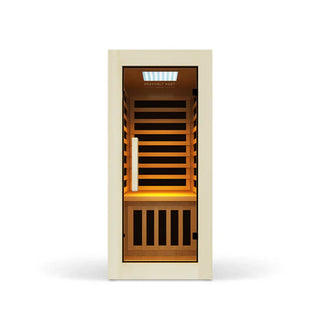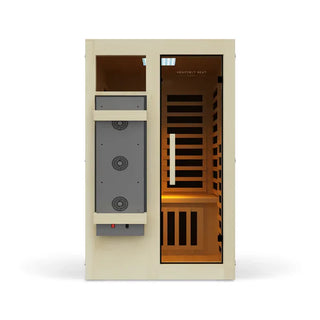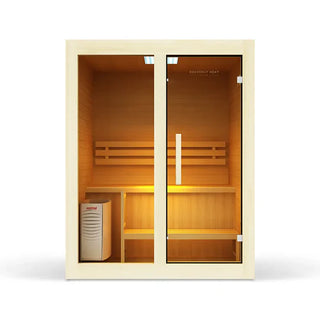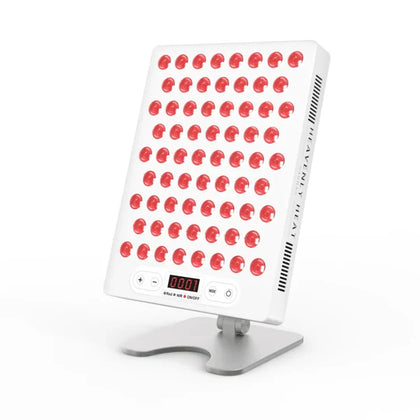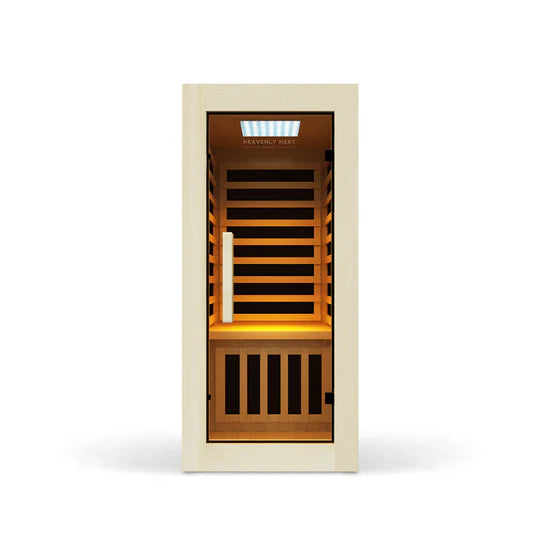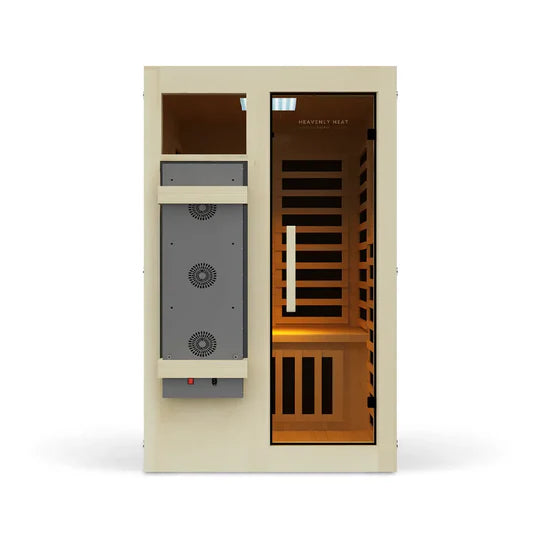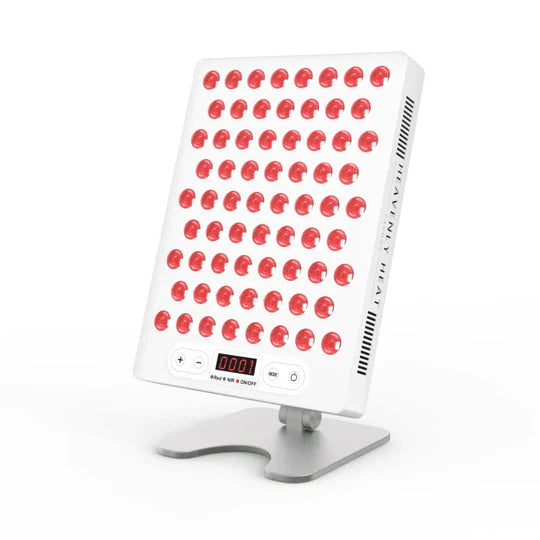Does red light therapy emit emf?

Wondering if red light therapy gives off EMF? You're not alone. Many people worry about the safety of these devices.
The good news is, most red light therapy tools emit very low EMF levels. In this guide, we’ll break it all down in simple terms so you can feel safe and informed. Keep reading!
Table of contents
Key Takeaways
Red light therapy devices emit low-frequency, non-ionizing EMF, which is safe compared to higher-frequency radiation.
EMF levels vary depending on device size, type, and power output; larger devices tend to emit more EMF.
Near-infrared devices may emit slightly more EMF than visible red light devices but remain within safe limits.
To reduce EMF exposure, maintain distance, use grounding mats, and choose low-EMF devices.
"EMF-free" devices are not entirely free of EMF but are designed to minimize exposure, so always check certifications.

What Kind of EMF Do Red Light Therapy Devices Emit?
- These Devices Give Off the Safer Kind of EMF: Red light therapy machines release a low-frequency type of EMF, which health experts consider less harmful compared to the stronger ones found in phones or microwaves.
- The Light Used Is Gentle and Not Dangerous: The red and near-infrared light from these devices sits in a lower range of the spectrum, which means it doesn’t carry the kind of energy that can hurt your body.
- The EMF Levels Are No Worse Than Your Wi-Fi: The amount of EMF coming from a red light therapy device is about the same ,or even less , than what you get from everyday electronics like a Wi-Fi router or cell phone.

How Is EMF Generated in Red Light Therapy Devices?
- EMF starts when the device is plugged in: Red light therapy devices begin generating EMF the moment they are connected to a power source, because electricity flows through their internal parts.
- The light bulbs inside create EMF while glowing: The LEDs in these devices not only shine light but also give off EMF as they convert electricity into red and near-infrared light.
- The power box plays a big role in EMF generation: The power supply (or adapter) helps run the device and produces its own EMF while managing the electric current.

Do All Red Light Devices Emit the Same Amount of EMF?
- Infrared Devices Emit More EMF: Infrared red light devices typically emit slightly more EMF than visible light devices due to their higher energy output.
- Larger Devices Tend to Emit More EMF: Bigger devices, such as panels, generally produce more EMF because they require more power to cover larger areas.
- Check Device Specs or Test Results for EMF: To accurately compare EMF emissions, look at the product specifications or independent test results from third parties.
Red Light vs Near-Infrared: Which Emits More EMF?
Both red light and near-infrared light therapy emit low EMF levels. Near-infrared devices may have a slightly higher EMF output because of their more intense wavelengths, but the difference is usually minimal. Both therapies are considered safe, with only minimal EMF exposure.
How to Measure EMF From Your Red Light Therapy Device?
- EMF Meters Are Needed for Accurate Measurement: To measure EMF from a red light therapy device, you’ll need an EMF meter, which detects AC electromagnetic fields emitted by electrical devices.
- Use High-Frequency Meters for Better Accuracy: For more precise readings, it's best to use a meter designed for high-frequency measurements to ensure accurate results.
- Handheld Meters Are Easy to Use for Quick Readings: Using a handheld EMF meter is a simple way to measure the EMF exposure from your device and check if it’s within safe limits.
Can You Reduce EMF Exposure While Using Red Light Therapy?
- Keep a Safe Distance from the Device: The farther you are from the device, the less EMF exposure you’ll have.
- Use Grounding Mats to Reduce EMF Effects: Grounding mats help neutralize your body’s electrical charge, reducing EMF impact during use.
- Choose Low-EMF Devices and Shorten Your Sessions: Using devices with lower EMF and keeping sessions brief helps minimize exposure.
What to Look For in Low-EMF Red Light Devices?
Low EMF Output
Look for devices with low EMF emissions, typically under 1–2 milligauss (mG), using an EMF meter to check.
Milligauss (mG) measures magnetic field strength, a key part of EMF exposure levels.
Wavelength Range
For skin rejuvenation and tissue healing, the ideal wavelength range is between 600 and 900 nanometers.
Safety Certifications
Ensure the device has certifications like CE, UL, or RoHS, which verify compliance with safety standards and confirm it meets environmental, health, and electrical safety regulations.
Power Output
Choose devices with a power output ranging from 100 to 200 milliwatts per square centimeter (mW/cm²) for optimal results.
Build Quality and Durability
- Built with Strong Materials for Long-Term Use: A well-made low-EMF red light therapy device uses durable materials like aluminum or stainless steel, ensuring it can withstand frequent use without wearing out quickly.
- Heat Management Systems Keep It Running Smoothly: Good devices have built-in heat management systems to prevent overheating. Some even use fans to cool down, though these can add a small amount of EMF. Choosing a device with efficient heat control helps keep it safe and functional.
- Sealed to Protect Against Dust and Moisture: Look for devices with an IP21+ rating, which means they are protected against dust and moisture. This helps prevent any risk of EMF leaks and keeps the device safe from environmental damage.
User Reviews and Expert Recommendations
- User Reviews Highlight Practical Benefits: User reviews often highlight improvements in skin tone, pain reduction, and faster recovery, showcasing the practical benefits of using red light therapy devices.
- Expert-Recommended Brands for Safe, Low-EMF Devices: Experts recommend brands like Joovv and Mito Red Light for their consistent performance and low-EMF emissions, ensuring a safe and effective experience.
- Expert Tips for Ensuring Safety and Effectiveness: Experts emphasize the importance of checking EMF levels, safety certifications, and user satisfaction to ensure the device is both safe and effective for use.
- Combining User Reviews and Expert Advice for Better Decisions: By comparing expert recommendations with user reviews, you can find a red light therapy device that meets your health, safety, and effectiveness needs.

Are “EMF-Free” Red Light Therapy Devices Legit?
The term "EMF-free" refers to devices designed to emit little to no electromagnetic fields.
While these devices may have reduced EMF exposure, there’s no scientific evidence that any device is entirely free of EMF.
Some manufacturers use shielding or low-energy components to minimize emissions, but trace amounts of EMF might still be present.
Always check for proper certifications to ensure the device meets safety standards.
Does Red Light Therapy Emit EMF?
- Red Light Therapy Does Emit Low Levels of EMF: Red light therapy does produce EMF, but the levels are very low compared to common devices like cell phones or microwaves.
- Near-Infrared Light in Red Light Therapy Doesn’t Emit Harmful Radiation: The therapy mainly uses near-infrared light, which doesn’t emit harmful radiation, making it safer than many other sources of EMF.
- Red Light Therapy Devices Stay Within Safe EMF Limits: Red light therapy devices comply with international safety standards, ensuring their EMF emissions are well below the safety limit set for public use.
FAQs
Does proximity to the red light device affect EMF exposure levels?
Yes, proximity matters. The closer you are to the device, the higher the EMF levels you’ll experience. To minimize exposure, maintain a comfortable distance from the device during use.
Are pulsed or flickering red light devices associated with different EMF emissions compared to continuous-wave models?
Pulsed and flickering devices may emit slightly more EMF due to the frequent switching on and off, which creates electrical bursts. Continuous-wave devices tend to have lower, more stable EMF levels.
Can EMF from red light therapy devices interfere with medical implants or devices like pacemakers?
The EMF emitted by red light therapy devices is generally too weak to affect medical implants like pacemakers. However, it’s always best to check with your healthcare provider before using red light therapy if you have any medical implants.
How do EMF emissions from battery-powered red light therapy devices compare to plug-in models?
Battery-powered red light therapy devices typically emit lower EMF compared to plug-in models, as they run on DC power. Plug-in devices often emit higher EMF because they draw AC power, which can create more interference. Some plug-in models include EMF shielding to reduce emissions.


